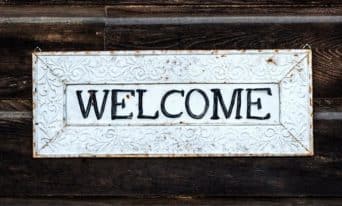Tools We Use: Operations
by Sarah-Leah Thompson
Insights / Digital Ink /

Photo by Dan Cristian Pădureț via Unsplash
Keeping a company organized and efficient is no small task.
Even though we’re a team of just six, we manage and maintain over 50+ websites and usually have anywhere between three to seven website redesign projects going on at the same time.
Here are some of the tools we use in order to stay on top of our tasks and make sure we’re creating high quality websites, graphics, and more!
Project Management
When it comes to project management, we use a variety of tools to visualize our to-dos and make sure we’re meeting our deadlines.
1) Trello
Trello is an application we use to create an at-a-glance view of all our ongoing tasks with a flexible, list-making approach. On Mondays and Wednesdays we meet as a team to review all our ongoing projects together via Trello.
Why we like it: Trello’s user-friendly card style lists allow us to easily move to-dos between “status” columns. It also allows each card to have a set due date that changes color as the date approaches, to easily convey which tasks are coming up or overdue.
2) Basecamp
Basecamp is the project management software we use to organize our projects and communication with clients. Basecamp supports discussion boards, file sharing, a calendar, and detailed to-do lists.
We prefer to communicate with clients on Basecamp so that we can easily track conversations and refer back to them when needed, rather than having miles-long email threads.
Why we like it: Basecamp gives you the option to add members to projects as either Team members or Clients, which allows us to keep track of both internal and external communications. It also allows you to assign owners and dates to tasks, and sends email reminders when the date approaches.
3) Dropbox
Dropbox is a file hosting service that we use to organize our files, assets, website backups, and more.
Why we like it: Dropbox’s best feature is the ability to sync files, which is useful for backing up files seamlessly.
4) Google Workspace
Google’s extensive suite of applications are a big part of our daily workflow. We use the Calendar, Sheets, Docs, and Drive platforms all day, every day. The Calendar organizes all of our internal and external meetings as well as team birthdays and workiversaries; the Docs are where we take all of our meeting notes, project reviews, and internal brainstorms; the Sheets are how we track and organize content; and Google Drive is where we organize the Docs, Sheets, and other miscellaneous files.
Why we like it: Every Google Workspace app is intuitive, user-friendly, and simply works. We also appreciate that Google continues to refine each tool incrementally to ensure that they integrate seamlessly. It makes note-taking and scheduling a breeze and we love using it.
Marketing
1) Loomly
Loomly is a social media management platform that we often use to schedule and track our internal and our clients’ social media content. You can integrate Loomly with social media platforms such as Facebook, Twitter, Instagram, LinkedIn, YouTube, TikTok, and more.
Why we like it: Loomly makes it very easy to post the same (or similar) content across multiple platforms in one fell swoop. This saves us a ton of time and still allows us to upload graphics and captions that are optimized for each platform. Loomly also provides suggestions and tips when scheduling content, such as using shorter captions for Twitter and scheduling LinkedIn posts during optimal business hours.
2) Mailchimp
Mailchimp is an email marketing platform primarily used to send newsletters and automated emails. You can use it manage and grow a subscriber list and create sophisticated user journeys.
Why we like it: We love Mailchimp for its user-friendly and reliable email management. We use it for our newsletter and larger scale email blasts. With its drag-and-drop layout system, it’s incredibly easy to build visually interesting campaigns without the need to use custom code.
3) Meta Business Suite
Meta Business Suite is Meta’s platform for managing Facebook and Instagram posts. From the Business Suite, you can easily schedule social media content in advance and monitor user engagement.
Why we like it: Meta Business Suite is a convenient tool to use when managing the social media content of our clients who exclusively post on Facebook and Instagram. The tool allows one you to customize content for each platform and also features a calendar with suggestions to post timely content such as national holidays and more obscure days like Apple Pie Day.
Internal Communication
1) Slack
Slack is a messaging app for businesses and communities. Slack offers flexibility to communicate instantaneously across various channels and seamlessly integrates with other tools such as Google Calendar, Zoom, and more.
Why we like it: Slack is probably our most frequently used tool. Our team communicates on Slack throughout the work day sending project updates and silly GIFs, and using the ‘huddle’ feature to have voice calls for quick brainstorming and collaboration. We also love the flexibility to add customized emojis, phrase-sensitive GIF automations, and status updates.
As a primarily remote team, Slack helps us stay connected and infuse our work day with humor and readily accessible support.
2) Zoom
Zoom is a video conferencing platform that by now we are all familiar with.
Why we like it: While we’re probably all sick of hearing “can you all see my screen?” or “you’re muted,” Zoom is an essential tool that allows us to communicate with our remote team members and our clients both across the country and internationally. We enjoy using Zoom for our team happy hours (pro tip: you can play music in the background!) and staying connected to our clients and partners.
3) Highrise
Highrise is a customer relationship management (CRM) tool for small businesses that tracks communications with clients.
Why we like it: We use Highrise to keep track of our external communications with clients over email. Highrise allows us keep transparent records of our email conversations so that threads don’t get lost in individual team members’ inboxes.




